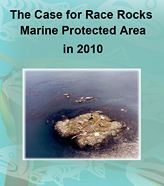This information page was prepared and distributed to members of the RRPAB by Garry Fletcher, Race Rocks Ecological Reserve Warden and Educational director for the website racerocks.com –April 12, 2010.
It was modified on June 2, 2010 after discussion with Kate Ladell, the Marine Planning & Protected Areas Specialist Oceans, Habitat and Enhancement Branch of Fisheries and Oceans Canada .
: From the Canada -British Columbia Discussion Paper of August 1998 entitled Marine Protected Areas, Strategy for Canada’s Pacific Coast, A Joint Initiative of the Governments of Canada and British Columbia , ( a draft discussion paper for an MPA strategy that was prepared in 1998 by both federal and provincial agencies, not just DFO.) Appendix A of the document identifies the “Principal Participating Agencies in the Development of the Marine Protected Areas Strategy” as: DFO, BC Land Use Coordination Office, Parks Canada, BC MOE, Lands and Parks, Environment Canada, BC Ministry of Fisheries
Ms.Ladell of DFO has recently (2010) pointed out that,”The goals in the vision statement were goals of the MPA Strategy, and are broad so that they encompass the mandates of several agencies and Ministries…. they never were the goals of Oceans Act MPAs. Again, there has been no shift. The goals of Oceans Act MPAs have never been tied to Community Outreach and Education – please refer the Oceans Act. ”
in Section 4 on Vision and Objectives for MPAs, one of the benefits of MPAs was found to be: ” encouraging expansion of our knowledge and understanding of marine systems;”
The 1998 Discussion paper went on in the objectives to specify two significant objectives that captured the essence of how important the process was for education and research.
“4.2 Objectives for Establishing Marine Protected Areas
5. To Provide Scientific Research Opportunities and Support the Sharing of Traditional Knowledge
Scientific knowledge of the marine environment lags significantly behind that for the terrestrial environment which can affect the ability of marine managers to identify the merits of protection or management options. MPAs provide increased opportunities for scientific research on topics such as species population dynamics, ecology and marine ecosystem structure and function, as well as provide opportunities for sharing traditional knowledge.
6. To Enhance Efforts for Increased Education and Awareness
Over the last few years, public understanding and awareness of marine environmental values and issues have been increasing. There is general recognition that proactive measures are necessary to protect and conserve marine areas to sustain their resources for present and future generations. However, there is still a significant need for public education to instill greater awareness of the role everyone can play in the conservation of marine environments. Many MPAs will afford unique opportunities for public education because of their accessibility and potential to clearly demonstrate marine ecological principles and values.”
In the 1999 paper by Louise Murgatroyd (sponsored by DFO) titled Managing Tourism and Recreational Activities in Canada’s Marine Protected Areas: the Pilot Project at Race Rocks, British Columbia acknowledgement is made of the role of MPAs and Education.
5.5 Education and Interpretation
The provision of opportunities for education is a central function of MPAs and is a desirable and highly effective strategy against negative impacts from tourism. Education programs also reduce the need for, and cost of, formal means of enforcement (Causey 1995). Commercial tourism activities at Race Rocks are, on the whole, oriented at providing an educational experience and this must remain their primary objective. Tour operators must be encouraged to include information specific to the natural history of Race Rocks and its ecosystem when taking clients there (Willison 1999, pers. comm.). Furthermore, information regarding its protected status as an ecological reserve and pilot MPA should be provided to generate recognition and support for such initiatives. There is a need for consistency in this respect and it would be appropriate for industry, in partnership with other agencies such as local universities and museums, to develop a minimum standard of information to be included in interpretation, to ensure that correct and relevant information is being provided.
Education and interpretation are particularly important for private recreational users who are considerably more difficult to target. Broader efforts aimed at educating the recreational boating public on general conduct and appropriate behaviour in coastal waters, including ERs and MPAs would seem to be a realistic approach. To this end, the distribution of the booklet Protecting BC’s Aquatic Environment: A Boater’s Guide, a joint publication by DFO, Environment Canada and BC’s Ministry of Environment, Lands and Parks should continue. The booklet covers a number of aspects of environmentally responsible boating, including respect for marine wildlife. The British Columbia Tidal Waters Sport Fishing Guide contains information on the location and regulations of MPAs, species conservation efforts and whale watching guidelines and is also an important contribution to awareness-raising……contd.
In 2001, The Oceans Directorate of Fisheries and Oceans Canada, Pacific Region published an information pamphlet titled
Xwayen (Race Rocks) Marine Protected Area. In that pamphlet educational use is recognized :
Under “Who can use a Marine Protected Area: “The type and level of use depends on why the area is being protected, and will be decided in consultation with local resource users. Levels of protection can vary from controlled use where resource harvesting is allowed to strict “no take”zones. Other uses may include education, research and tourism.”
In the Management Plan developed by the Race Rocks Advisory Board in 2002, the following objectives were set out which also included Education and Outreach:
1″.To contribute to the protection of marine biodiversity, representative ecosystems and special natural features.
2.To contribute to the conservation and protection of fishery resources and their habitats.
3. To contribute to the protection of cultural heritage resources and encourage understanding and appreciation .
4. To support recreation and tourism opportunities.
5.To provide scientific research opportunities and support sharing of traditional knowledge.
6. To enhance efforts for increased education and awareness. To develop partnerships for management and protection of the ecological reserve – marine protected area including monitoring and reporting activities.
7.To develop working relationships and educational programs with First Nations.”
In the 2005 booklet titled Canada’s Federal Marine Protected Areas Strategy published by the Communications Branch of Fisheries and Oceans Canada, Three core programs of the Marine Protected Areas Network are set out:
• Oceans Act Marine Protected Areas established to protect and conserve important fish and marine mammal habitats, endangered marine species, unique features and areas of high biological productivity or biodiversity.
• Marine Wildlife Areas established to protect and conserve habitat for a variety of wildlife including migratory birds and endangered species.
• National Marine Conservation Areas established to protect and conserve representative examples of Canada’s natural and cultural marine heritage and provide opportunities for public education and enjoyment.
On the 2006 DFO webpage (active until April 2010), the Vision and Objectives page carried the following 2 objectives of a list of 6:
“The MPA Vision:
Generations from now Canada will be one of the world’s coastal nations that have turned the tide on the decline of its marine environments. Canada and British Columbia will have put in place a comprehensive strategy for managing the Pacific coast to ensure a healthy marine environment and healthy economic future. A fundamental component of this strategy will be the creation of a system of marine protected areas on the Pacific coast of Canada by 2010. This system will provide for a healthy and productive marine environment while embracing recreational values and areas of rich cultural heritage.
Objectives for Establishing Marine Protected Areas:
* To contribute to the Protection of Marine Biodiversity, Representative Ecosystems and Special Natural Features
* To contribute to the Conservation and Protection of Fishery Resources and Their Habitats
* To contribute to the Protection of Cultural Heritage Resources and Encourage Understanding and Appreciation
* To provide Opportunities for Recreation and Tourism
* To provide Scientific Research Opportunities and Support the Sharing of Traditional Knowledge
* To Enhance Efforts for Increased Education and Awareness”
In this 2007 version of the Oceans and Fish Habitat section on the DFO website at http://www.dfo-mpo.gc.ca/oceans-habitat/oceans/ri-rs/mpaframework-cadrezpm/page04_e.asp the need for effective partnership is emphasized.
“The concept of partnership is vital to the MPA Program its success depends on how well various interests are able to work together. Key program areas dependent on partnership include the gathering of information, the development of public awareness of environmental issues, the conducting of research, and the enforcement of regulations.”
Coastal Communities and Non-Government Conservation Organizations
The MPA program provides an opportunity for communities, as well as local, regional and national conservation groups, to be involved in conservation activities in the marine environment. In coastal MPA management, local organizations and communities will have the opportunity to play a prominent role, ranging from nomination and comanagement of sites to consultation activities and public awareness programs. Organizations nominating an MPA could become a ‘sponsor’ for the site. A sponsor is an organization prepared to make a long-term partnership arrangement for managing the MPA.”
Under information Sources:
establishing a monitoring component as part of some MPAs
using MPAs as natural laboratories to conduct environmental research.
Research and monitoring
Many environmental processes within marine ecosystems are poorly understood. Scientific research and monitoring may be conducted within MPAs, where appropriate, to understand marine ecosystems better and to provide valuable data on environmental changes.
Public awareness
Compliance with MPA regulations and management plans depends on the awareness and cooperation of the public. Interpretation and education programs may be necessary to explain the purposes of MPAs, and to provide information on appropriate activities within an area.”
In the 2009 version of the DFO website at:http://www.pac.dfo-mpo.gc.ca/oceans/mpa/vision_e.htm no mention is made of the outreach goals of the MPAs but education is still included in the goals of the National Marine Conservation Area. (However Race Rocks is not part of one of those)
“Purpose and Goals ( of MPAs)
Fisheries and Oceans Canada (DFO) designates marine protected areas under the Oceans Act in order to protect and conserve:
* commercial and non-commercial fishery resources and their habitats;
* endangered marine species and their habitats;
* unique habitats;
* marine areas of high biodiversity or biological productivity; and
* any other marine resource or habitat necessary to fulfill the Ministers mandate.
Within Canada, two other federal agencies — Environment Canada (Canadian Wildlife Service) and Parks Canada Agency — are working in collaboration with DFO to establish and manage federal marine protected areas
.Environment Canada
* Marine Wildlife Areas — established to protect and conserve habitat for a variety of wildlife, including migratory birds and endangered species.
Parks Canada
* National Marine Conservation Areas — established to protect and conserve representative examples of Canada’s natural and cultural marine heritage, and to provide opportunities for public education and enjoyment. ”
So it may be apparent now that the government Policy has evolved over the years on why Marine Protected areas are being established, and the public outreach element has been relegated to a task of the National Marine Conservation Areas. Since Race Rocks has never been part of a National Marine Conservation Area Proposal, it calls into question the appropriateness of an MPA under the Oceans act at the Race Rocks Ecological Reserve. Perhaps it should be considered a Marine Conservation Area where education is a priority. It appears that the existing mandate for Provincial Ecological Reserves of “promotion of research and education” will have to be relied upon for the Race Rocks MPA. Many of the stakeholders who have contributed time and energy to the MPA Advisory Process over the past years have done so with the understanding of the importance of “Outreach and Education” as a significant part of the MPA objectives. Clarification provided by DFO indicates that Education and Outreach is not part of their mandate but will still be part of the MPA through the existing Ecological reserve. Indeed I guess we were mislead as is indicated below.
Ms. Ladell of DFO has emphasized: ” There hasn’t been a change in policy regarding education and outreach in the MPA strategy. It is important to clarify that the strategy is not a DFO strategy but a federal-provincial strategy for a network of MPAs. The objectives that are included in that strategy (which, by the way, was released as a discussion paper in 1998 and never finalized), are therefore objectives for a network of federal-provincial MPAs, and are inclusive of the mandates of all involved agencies and ministries. The objective you note with respect to education and outreach is tied to the mandates of BC Parks and Parks Canada, and is one that DFO supports through a network approach, but not one that has ever been tied to our mandate per the Oceans Act. Therefore, the way the old website was written was indeed misleading, as it made it sound like the objectives were all DFO objectives for MPAs, when in fact they are objectives for the MPA network that are inclusive of several agencies’ mandates. ”
“HOWEVER, these are critical components of the Management Plan because they can support meeting the conservation objectives, and can therefore be included in the Management Plan. The important distinction here is between the actual conservation objective and implementation of the conservation objective through the management of the MPA (as outlined in a Management Plan).
This was taken down because it was misleading…… The objectives included in the 1998 Canada-BC discussion paper for a MPA Network Strategy are objectives for a network of federal-provincial MPAs, and are inclusive of the mandates of all involved agencies and ministries. The objectives specific to education and outreach are tied to the mandates of BC Parks and Parks Canada, and are objectives that DFO supports through a network approach, but not objectives that have ever been tied to our mandate per the Oceans Act. Therefore, the way the old website was written was misleading, as it made it sound like the objectives were all DFO objectives for MPAs, when in fact they are objectives for the MPA network that are inclusive of several agencies’ mandates. The old website was taken down because of the confusion it was causing and because it has finally been updated.
……..education is part of Parks Canada’s mandate around the establishment of National Marine Conservation Areas. There is no mention of outreach goals in the 2009 version of the DFO website, because, as stated above, outreach is not part of the mandate for conservation objectives in Oceans Act MPAs.
This is bolded on the website, but it is important to note that this is for NMCAs, not Oceans Act MPAs. As you correctly note above, the purpose of Oceans Act MPAs is very specific to the bullets (highlighted in large brown bold above).
………
Government policy has not changed on why Oceans Act MPAs are being established. The public outreach element has never been a part of the language around Oceans Act MPA designation or purpose from a regulatory standpoint.
HOWEVER, as stated above and in several recent meetings, DFO recognizes the important role of education and outreach and agrees that they should be a component of the management plan for Race Rocks MPA.”
(e-mail from Kate Ladell..June 2 2010 DFO)

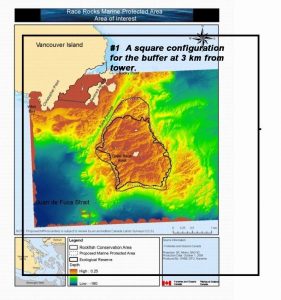
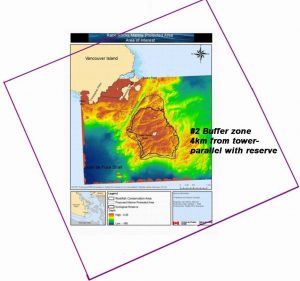
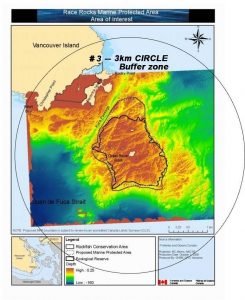
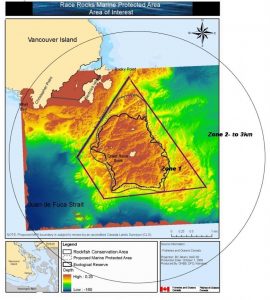
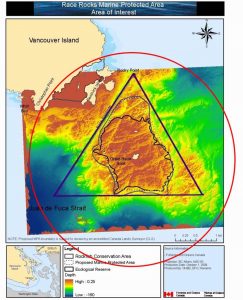
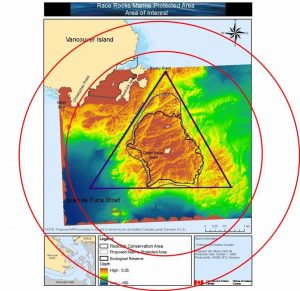
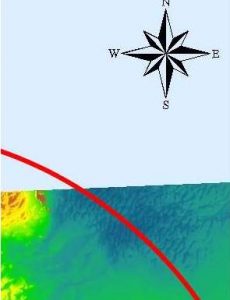
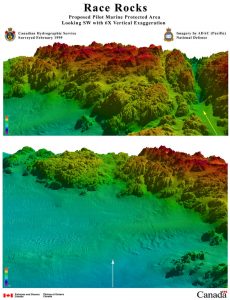
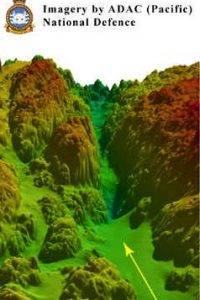
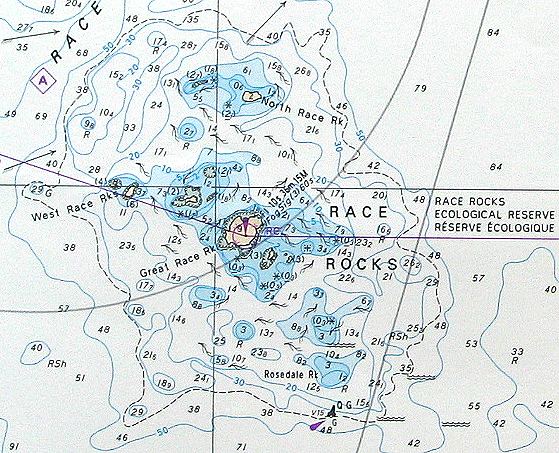
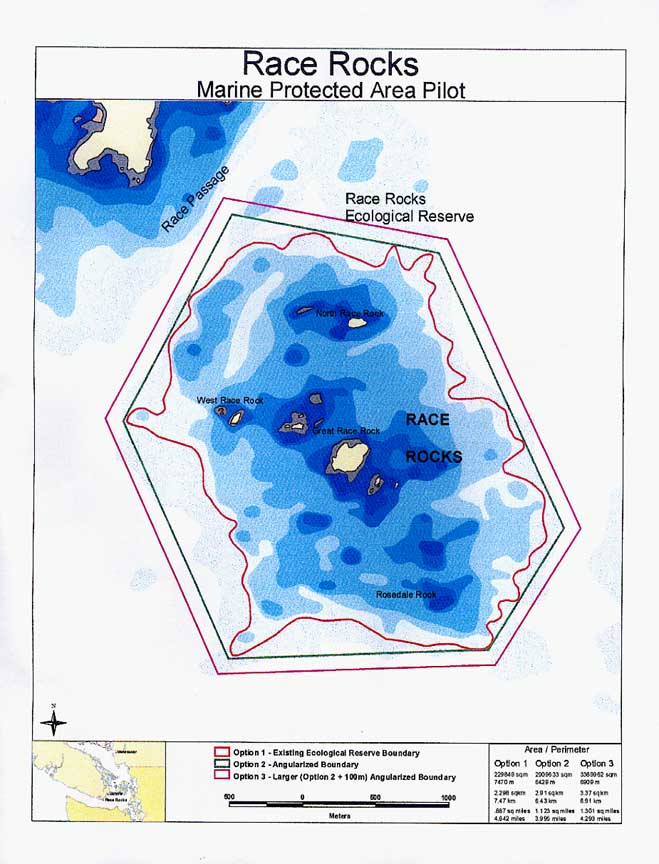
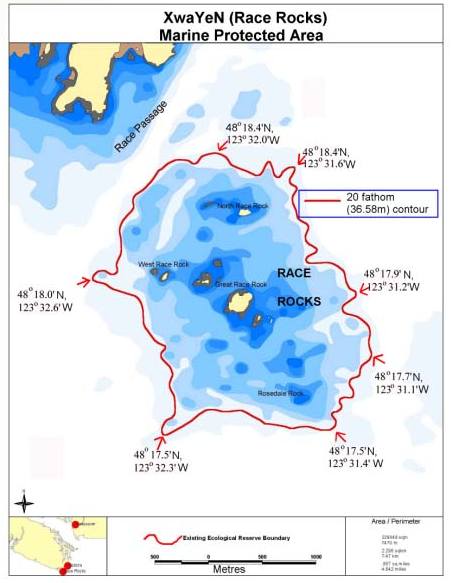
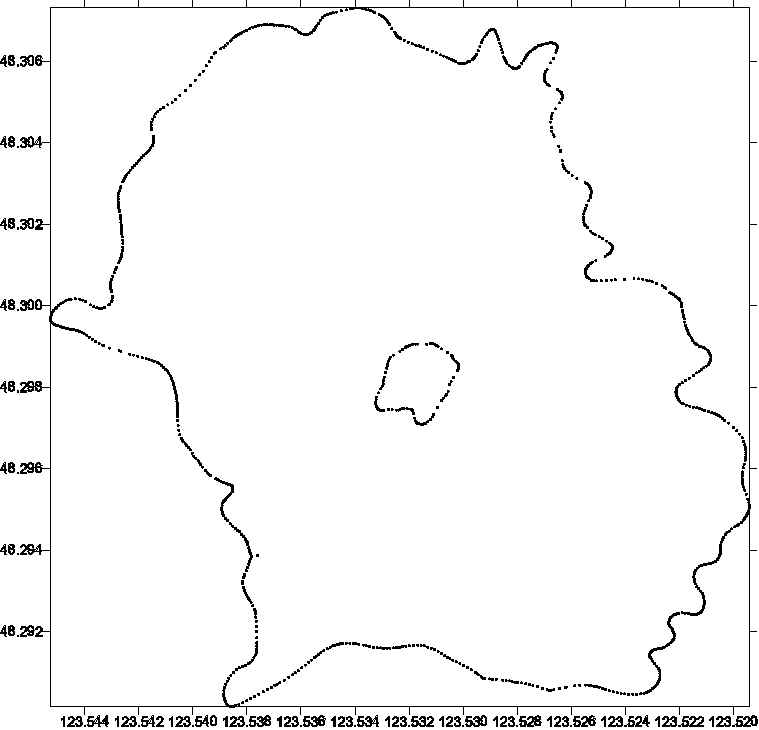
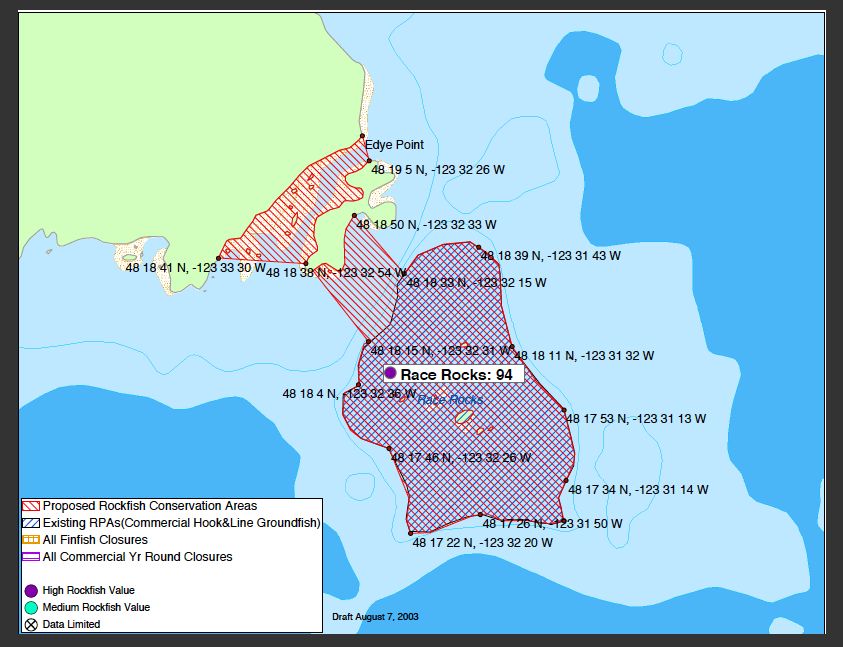
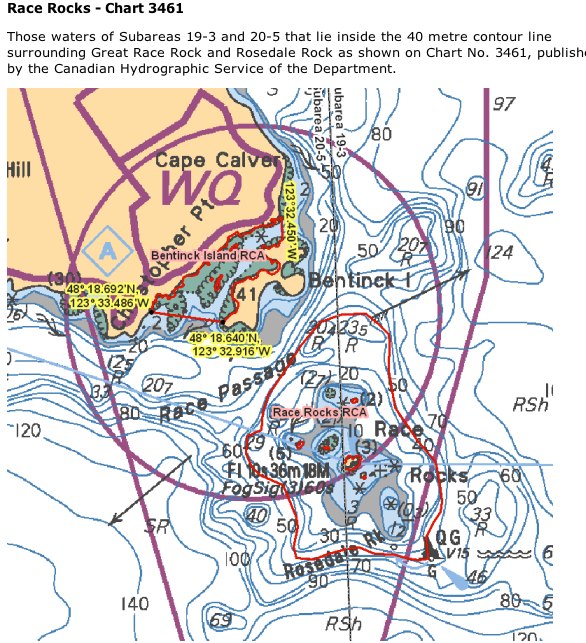
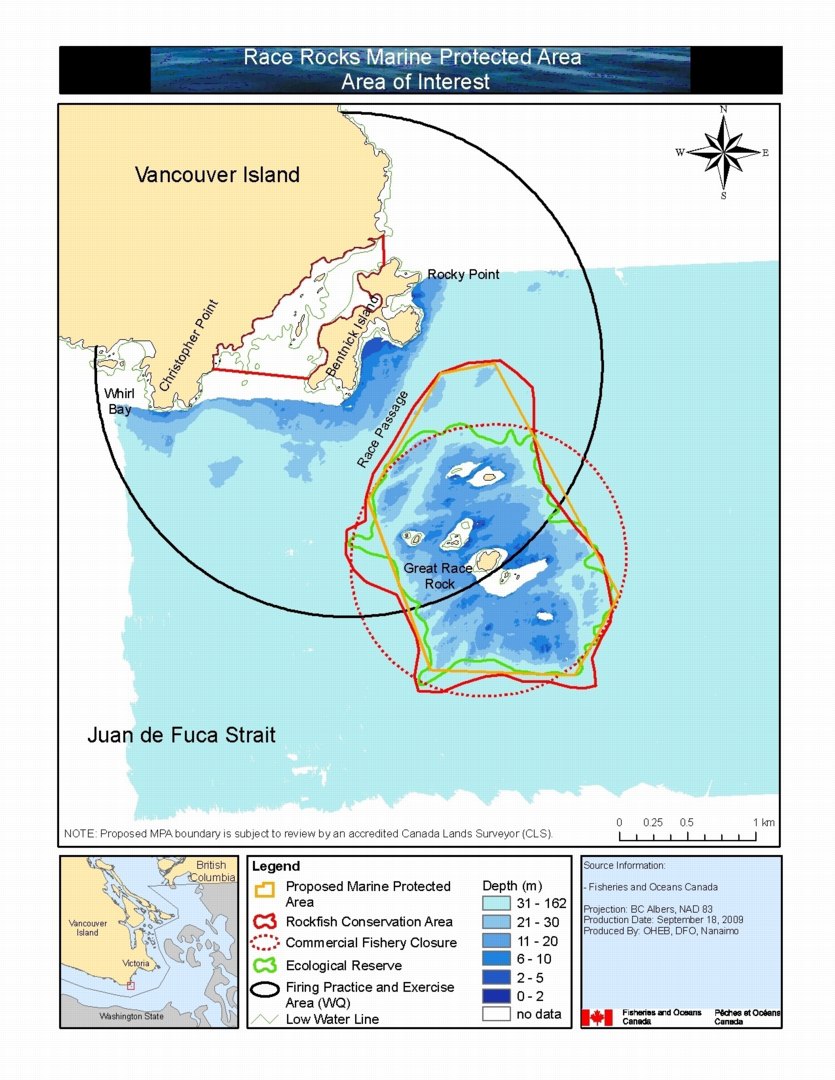
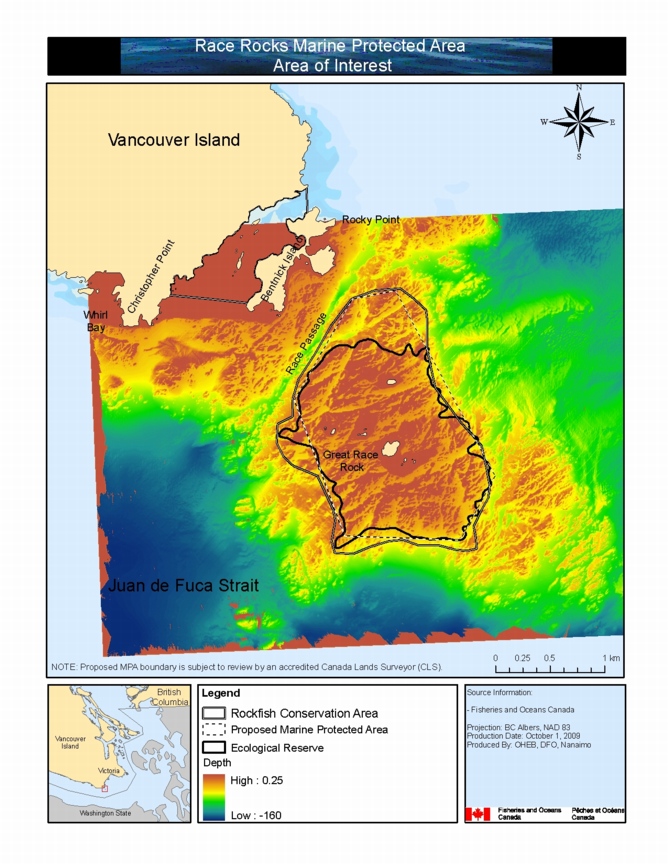
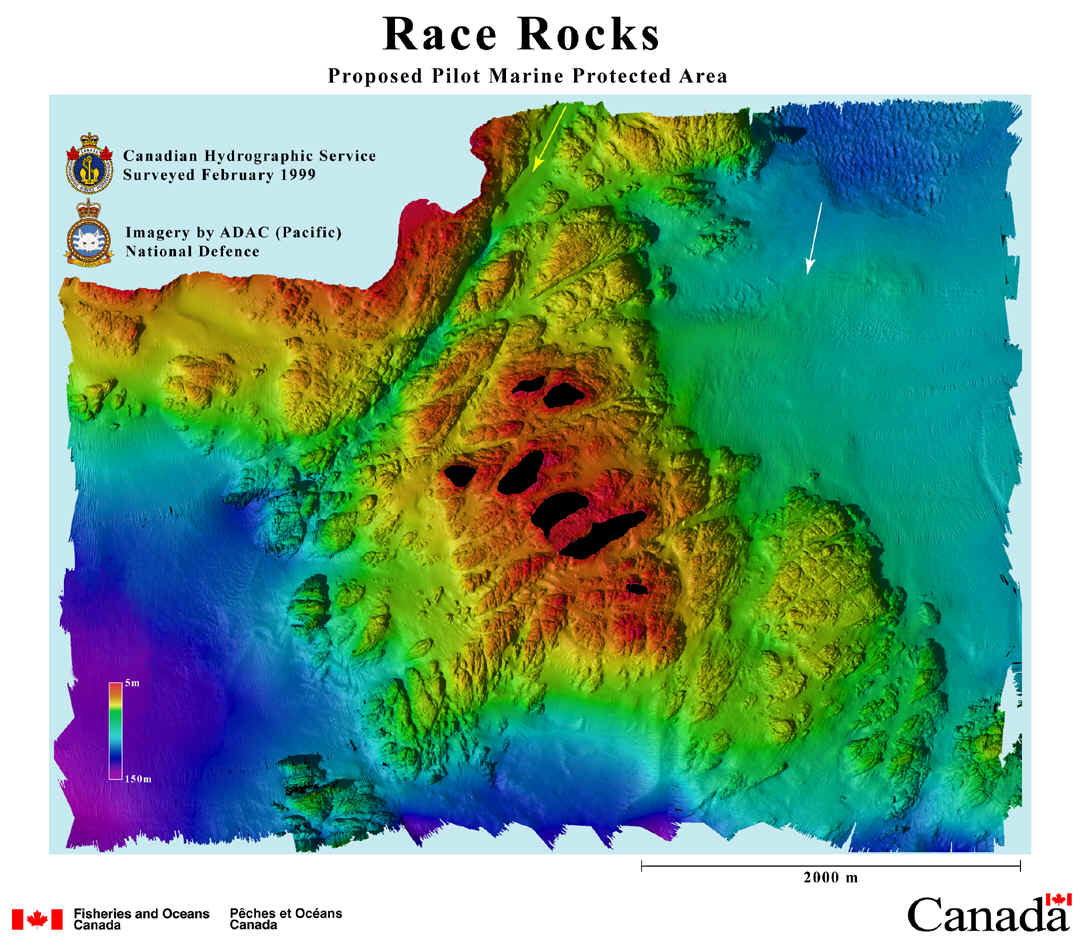
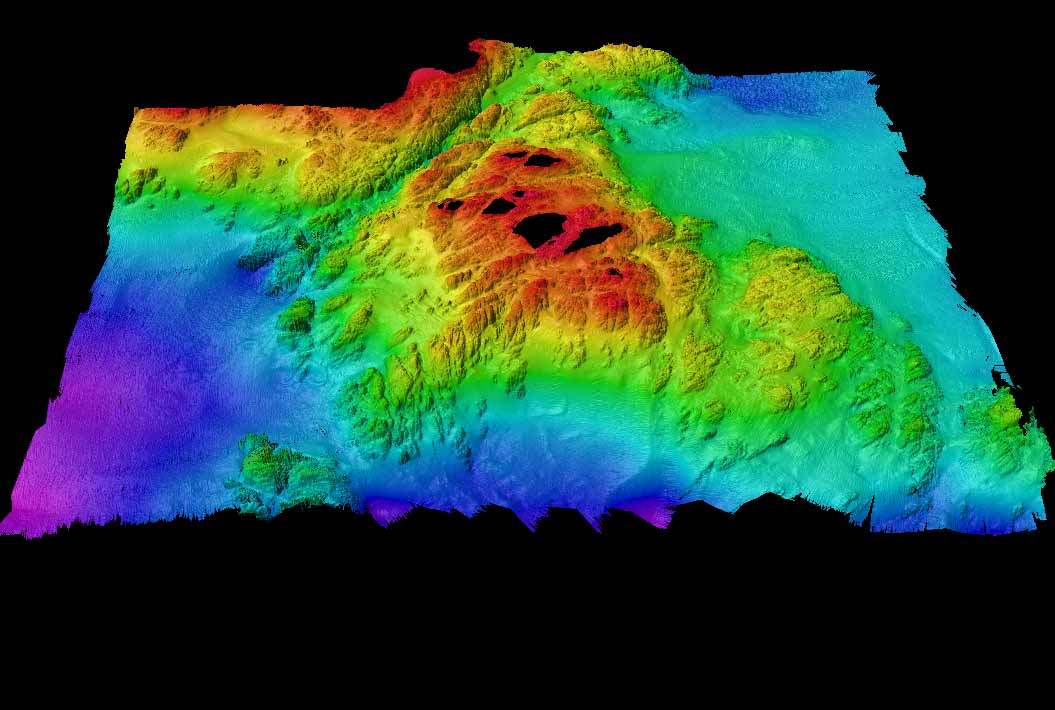
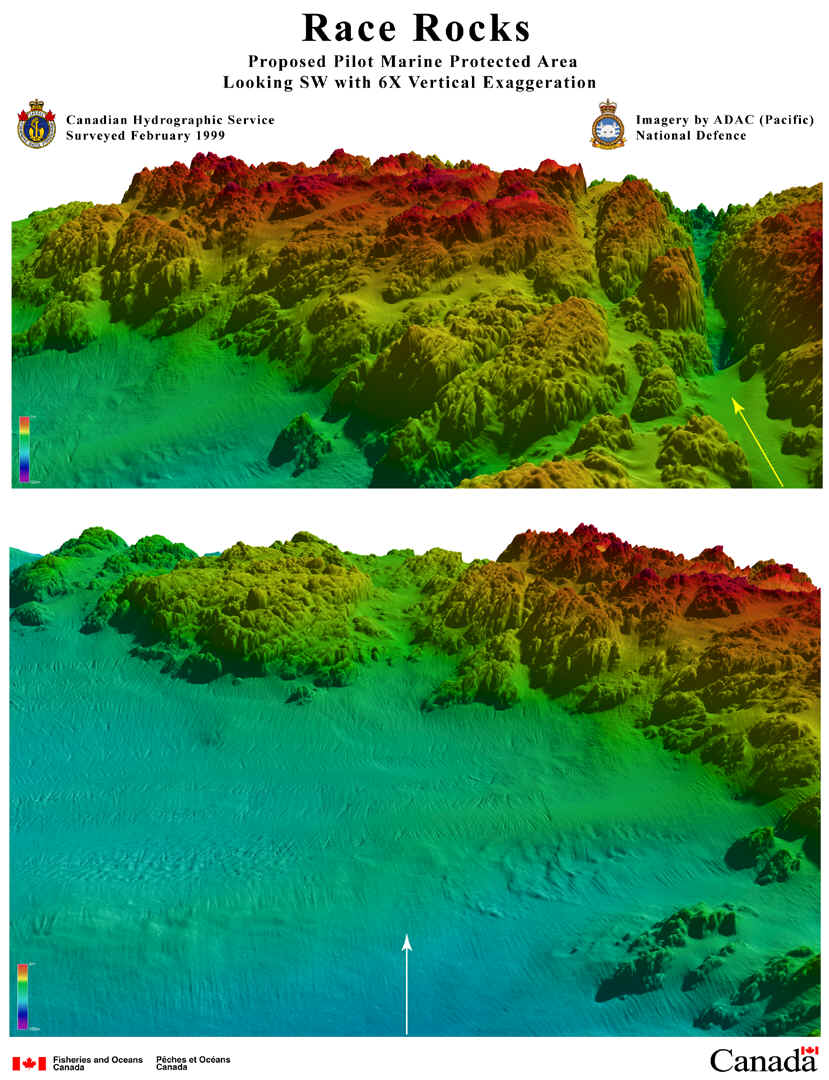
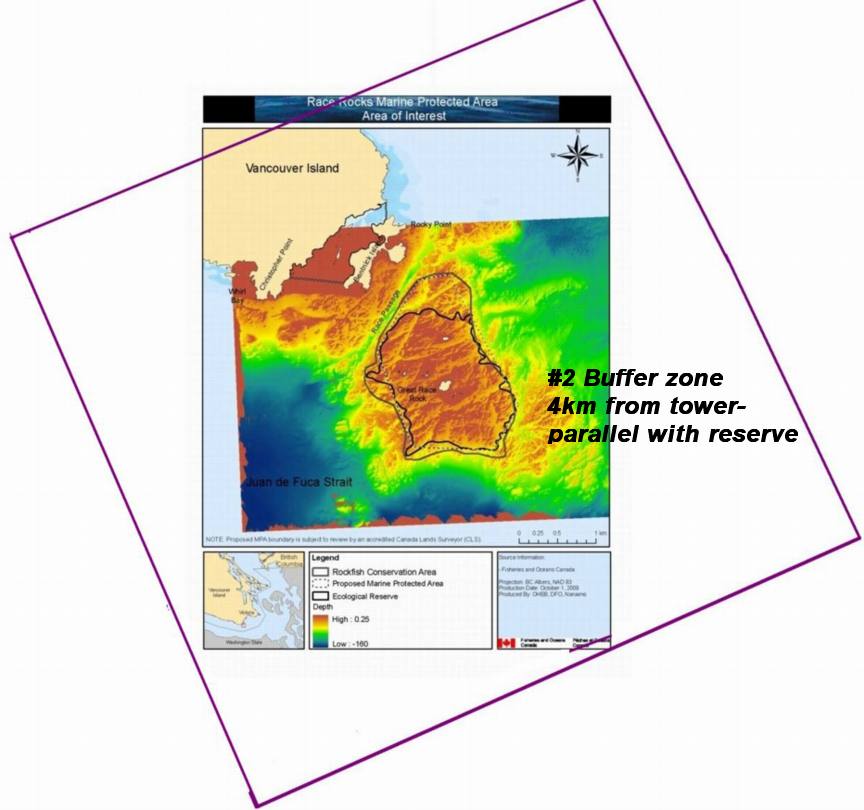
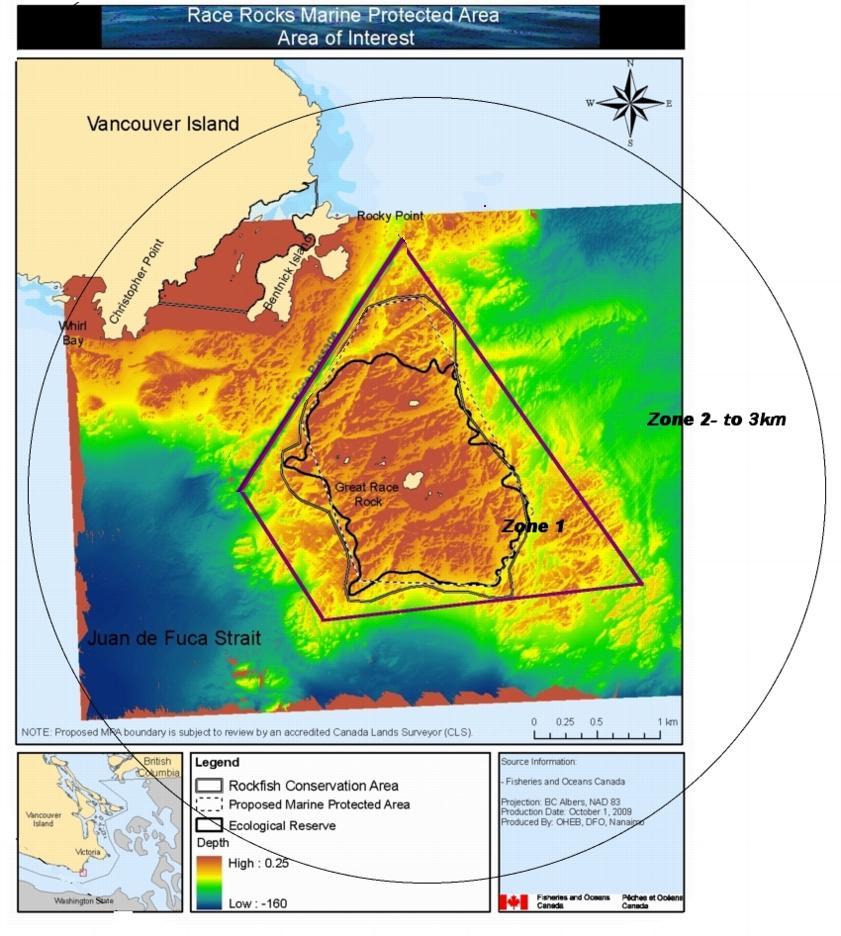
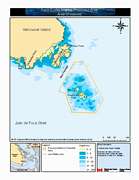 Proposed boundary areas
Proposed boundary areas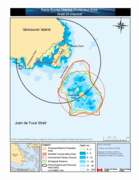 Proposed boundary areas detail
Proposed boundary areas detail